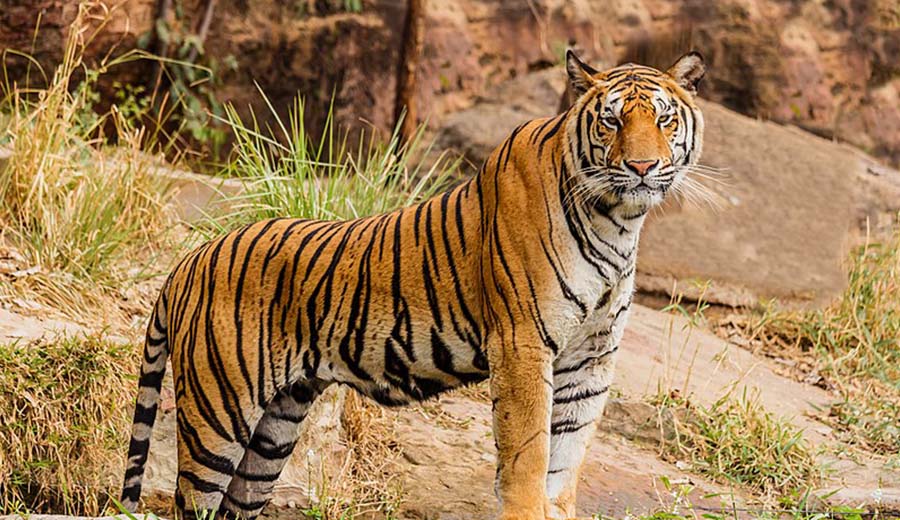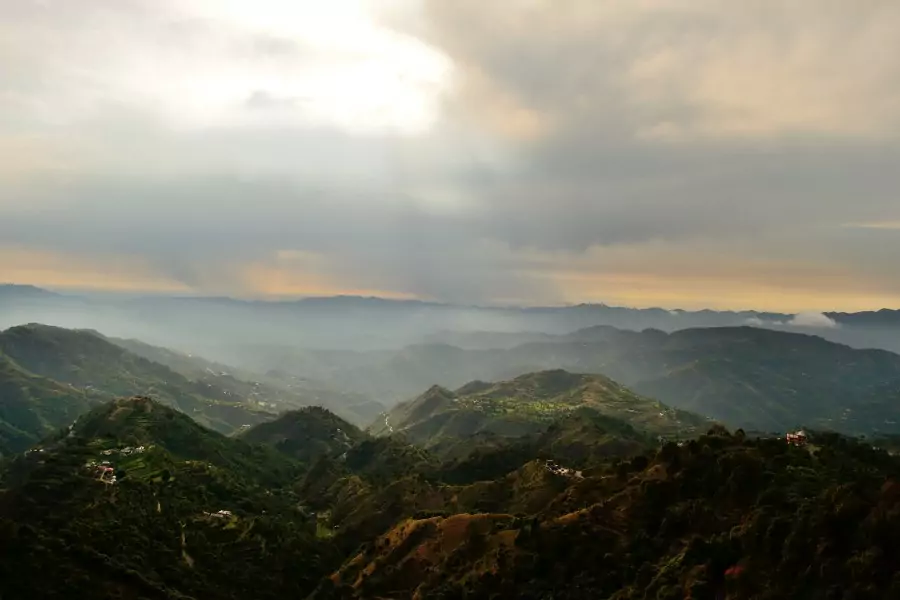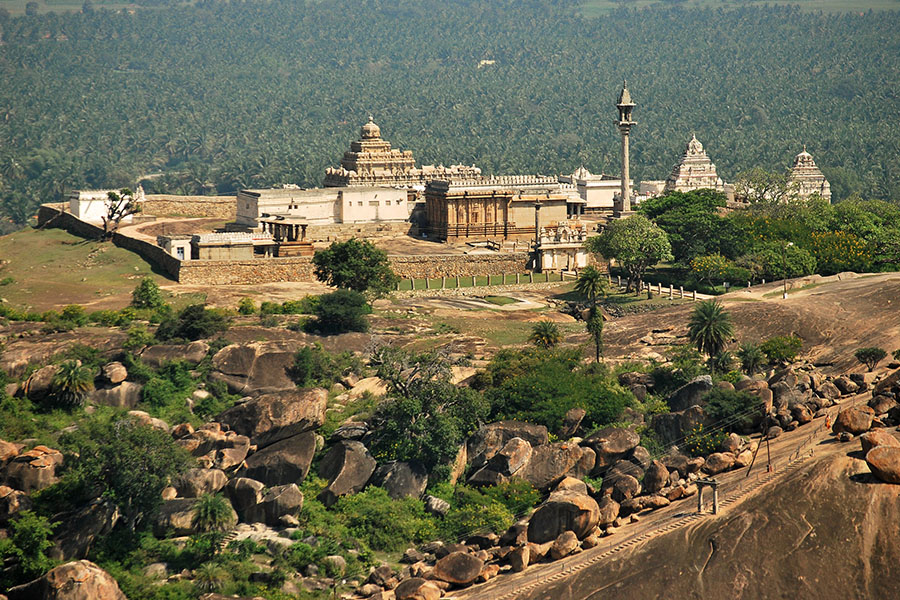Kawal Tiger Reserve
Kawal Tiger Reserve in the Adilabad district of Telangana is great potential for increasing the population of tigers. Read more about this nature reserve which is emerging as a popular tourist destination in Telangana state.
Kawal Tiger Reserve is situated at Jannaram mandal which is the major city of Adilabad district in Telangana. Though now it’s survived a huge tree felling and individual infringement, the Telangana Government has taken up some positive endeavors to restore its own resources. At this time it is a great spot for a small visit through the jungle. You will find deer, sambars, wild buffaloes, and a good number of all languors which can be at sight if you are fortunate. The Govt of India announced Kawal wildlife sanctuary as a Tiger Reserve in 2012.
The sanctuary is rich with a Teak plantation stretched over a place of Area: 892.23 square kilometers with a pristine and dense range of woods area. The River Kadam escapes nearby, which also is a very wonderful tourist attraction. The Dry Deciduous Teak Forests is accompanied by lovely vegetation such as Bamboo, Anogeisus, Terminalia, Pterocarpus, and Cassias.
If you’re at the ideal time while going into the jungle, then you get to find quite a few Mammal species like tiger, leopard, cheetah, sambar, gaur, nilgai, barking deer, chowsingha, and the infrequent sloth bear. It’s home to many species of birds among which the most common is the parakeet and the Great Indian Bharadwaj. You see many species of reptiles like Iguanas, Monitor lizards,s and the most poisonous Rattlesnake.
Wildlife fans who are seeking a small jungle excursion in Telangana can appreciate a great short day out within this world of jungle.
There are two rivers accentuating the location with their beautiful ambiance, Godavari and Kadam. The Kadam river is now commanded by a dam and the Telangana Govt. Has also made a tourist lodge to remain there.
Traveling Tips
The place is hot during summer, so better to wear something cool and less colorful. You should not carry any eatables except water bottles and also please don’t throw any litter in the jungle region. Don’t forget to take some mosquito repellent and then use it until you put it in the forest. Maintain silence if you’re keen to get glimpses of these wildlife species.
Activities
Jungle excursion by the Forest Department’s vehicle. Stop by the following areas:
- Kuntala Waterfalls
- Pochera waterfalls
- Kadem Reservoir
Though they all are very alluring water bodies, people aren’t allowed to take baths or go close to the water because of crocodiles.
History of Kawal Tiger Reserve
Kawal Wildlife Sanctuary was established in 1965 in the Adilabad district of Telangana, India. In 2012, it was upgraded to a Tiger Reserve and named Kawal Tiger Reserve. The reserve covers an area of 893.23 km² and is known for its rich biodiversity and habitat for several threatened species including tigers, leopards, sloth bears, and Indian vultures. The forest is also home to several tribes, who have lived in harmony with the forest for generations. The Kawal Tiger Reserve is considered as one of the important tiger habitats in India and is also recognized as a biodiversity hotspot.
Best time to visit
The best time to visit Kawal Tiger Reserve is from November to June, during the winter and summer months. During this time, the weather is pleasant and dry, making it easier to explore the reserve. Visitors can expect to see a variety of wildlife, including tigers, during the day as well as at night, when they are more active. The monsoon season, which lasts from July to October, is not recommended as the reserve experiences heavy rains, making it difficult to explore the area. Additionally, some roads and trails in the reserve may be closed during this time due to the wet conditions.
Wildlife
Kawal Tiger Reserve is known for its rich biodiversity and is home to a variety of wildlife species. Some of the notable species found in the reserve include:
- Tigers: Kawal Tiger Reserve is one of the important habitats for tigers in India and is known for its healthy tiger population.
- Leopards: The reserve is also home to a good number of leopards and is considered as one of the important habitats for these big cats in India.
- Sloth Bears: Sloth bears are also found in the reserve and are known to be active in the forest during the day and night.
- Indian Vultures: The reserve is a critical habitat for the Indian vulture, a species that has experienced a significant decline in recent years.
- Other mammals: Other mammals found in the reserve include gaur, sambar deer, chital, hyena, and wild boar.
- Birds: Kawal Tiger Reserve is also a birdwatcher’s paradise, with over 300 species of birds being recorded in the area, including the crested serpent eagle, Indian roller, and the painted stork.
- Reptiles: The reserve is also home to a variety of reptiles, including several species of snakes and turtles.
Visitors to the reserve can explore the area on foot, by vehicle, or by boat, and can expect to see a variety of wildlife, including the aforementioned species, during their visit.
How to reach
Kawal Tiger Reserve is located in the Adilabad district of Telangana, India, and can be reached by various modes of transportation. Here are some ways to reach the reserve:
- By air: The nearest airport is the Rajiv Gandhi International Airport in Hyderabad, which is approximately 220 km away from Kawal Tiger Reserve. From the airport, visitors can take a taxi or a bus to reach the reserve.
- By train: The nearest railway station is the Nizamabad railway station, which is approximately 70 km from the reserve. From the railway station, visitors can take a taxi or a bus to reach the reserve.
- By road: Kawal Tiger Reserve is well connected by road and can be reached by car or bus. Buses run regularly from Hyderabad and other nearby cities to Nizamabad, from where visitors can take a taxi or a local bus to reach the reserve.
It is advisable to plan your visit to Kawal Tiger Reserve in advance and make arrangements for transportation, accommodations, and guides, if necessary.



